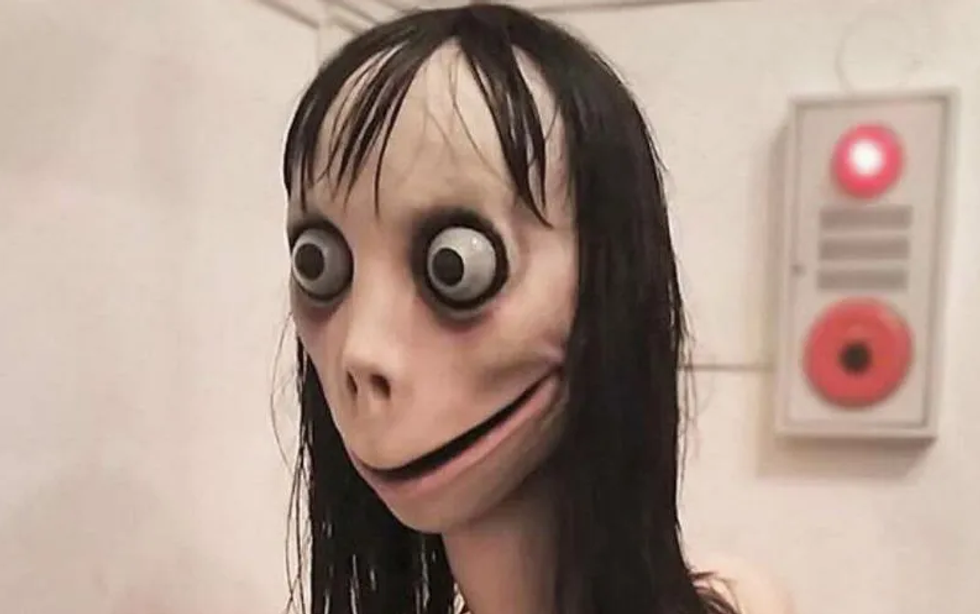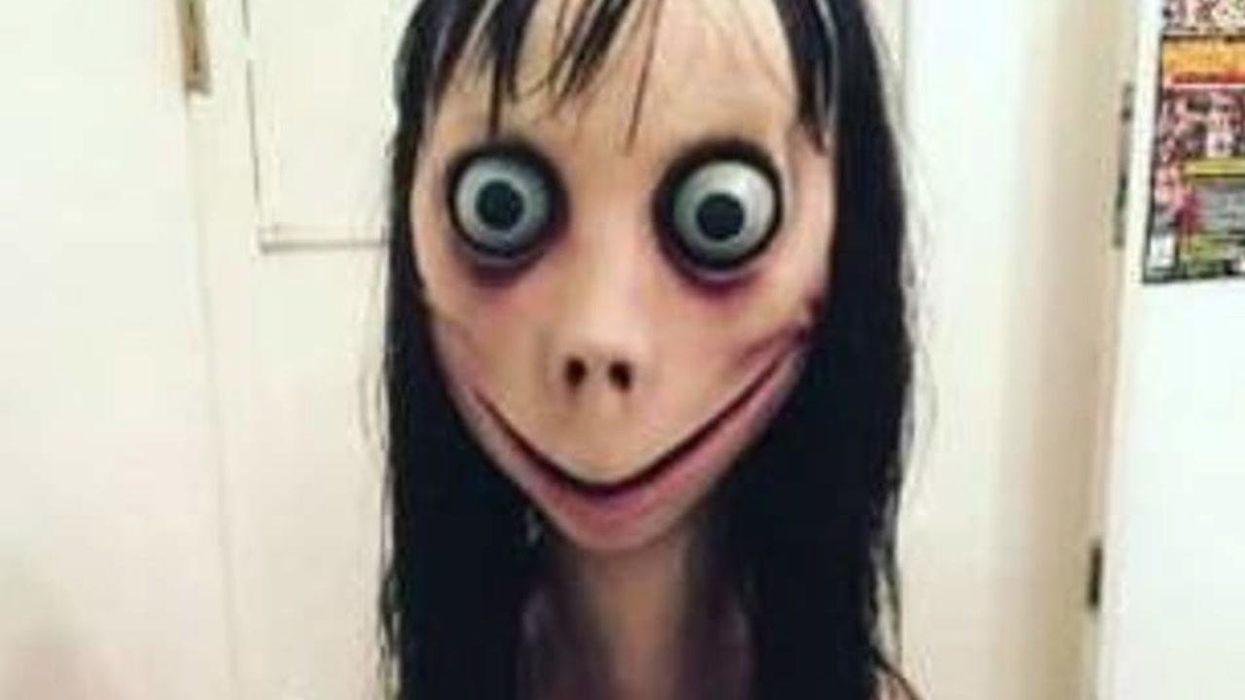It's a phantom that swept across the internet and left almost as soon as it arrived – the 'Momo challenge hoax' is one of the most fascinating internet phenomena of recent times.
Back in 2019, in the heady days before the arrival of the pandemic, you might remember an influx of creepy images of a terrifying, wide-eyed woman with a sinister air being everywhere online.
That was Momo, an internet boogeywoman at the centre of a media storm, who gained infamy for inspiring an ‘evil suicide game’ that sparked widespread fear and superstition.
It’s easy to see why – just looking at the image is enough to set your teeth on edge.
Sign up for our free Indy100 weekly newsletter
According to viral hearsay at the time, the ‘momo challenge’ at the heart of it all supposedly began when the figure popped up on devices used by children in seemingly innocuous places, prompting them to do dangerous things via message – including, as was reported at the time, acts of self harm.

It led to a public safety drive, with a number of schools holding assemblies to educate students on the matter. For a while it became the only people were talking about and Kim Kardashian even posted about it, enshrining its place in viral folklore forever.
The thought of innocent children being led astray by sinister means online is, of course, a terrifying thought. It’s no wonder the mysterious figure of Momo attracted widespread media attention.
But while there seemed plenty to be scared of, there was nothing to back up the sinister rumours of Momo and her malicious intentions.
Despite it being one of the most covered topics in the news at the time, outlets began to report that the story had been massively overstated and the actual threat to children was very low.
FullFact looked into the story and found that there were no recorded examples of any children being targeted by the internet phenomenon.
“We have seen no clear evidence that anyone has actually been subject to the Momo challenge as described above, either in the UK or abroad,” the organisation said at the time.
“Media reporting of the supposed Momo challenge has led to police organisations and safety experts publishing advice to parents on the threat posed by Momo and how to avoid it. This in turn has fuelled yet more media coverage.”
While there were many videos made about the so-called challenge, YouTube also came out with a statement to deny that it had discovered any evidence of it ever actually happening.
“Contrary to press reports, we’ve not received any recent evidence of videos showing or promoting the Momo challenge on YouTube,” the company said in a statement to BuzzFeed News at the time.
Even now relatively little is known about the challenge, or how it became the most talked about thing on the internet. In the end, it turned out to be one of the online ghouls that have come to be known as ‘creepypasta’ - a catch-all term for the mysterious trends which are designed with the intention to scare and disrupt users online, like the blue whale challenge or slender man.
We do know, though, what inspired the creepy imagery surrounding it. The image is a real statue called Mother Bird made by Japanese artist Keisuke Aiso which was displayed in a gallery in Tokyo at the time. It was however destroyed by Aiso soon after the alleged challenge it became the face for went viral.
The statue that inspired it might be gone, and the Momo challenge a half-forgotten memory three years later, but the notion of ‘creepypastas’ will always exist online. Who knows when the next phantom threat will emerge?
Have your say in our news democracy. Click the upvote icon at the top of the page to help raise this article through the indy100 rankings.














